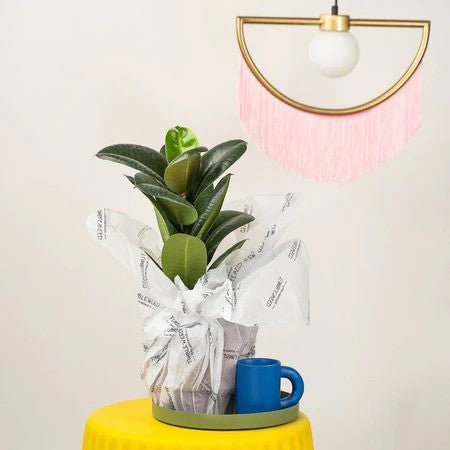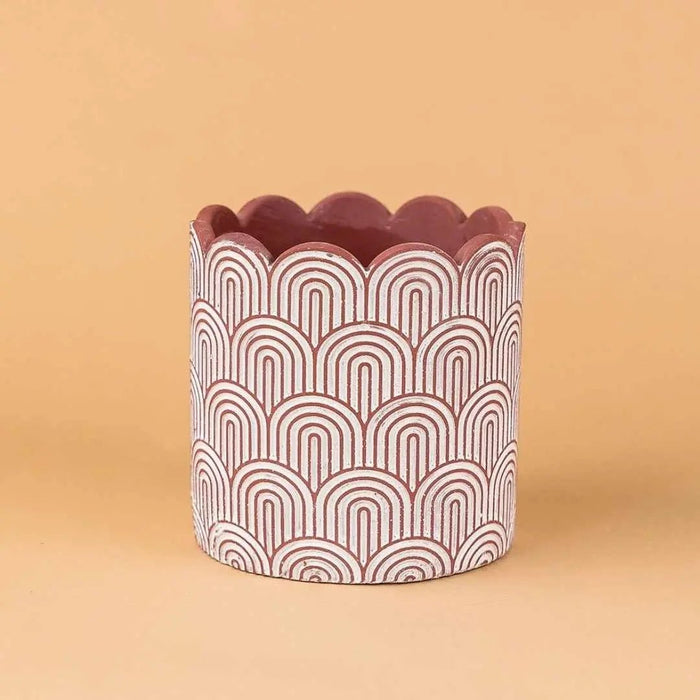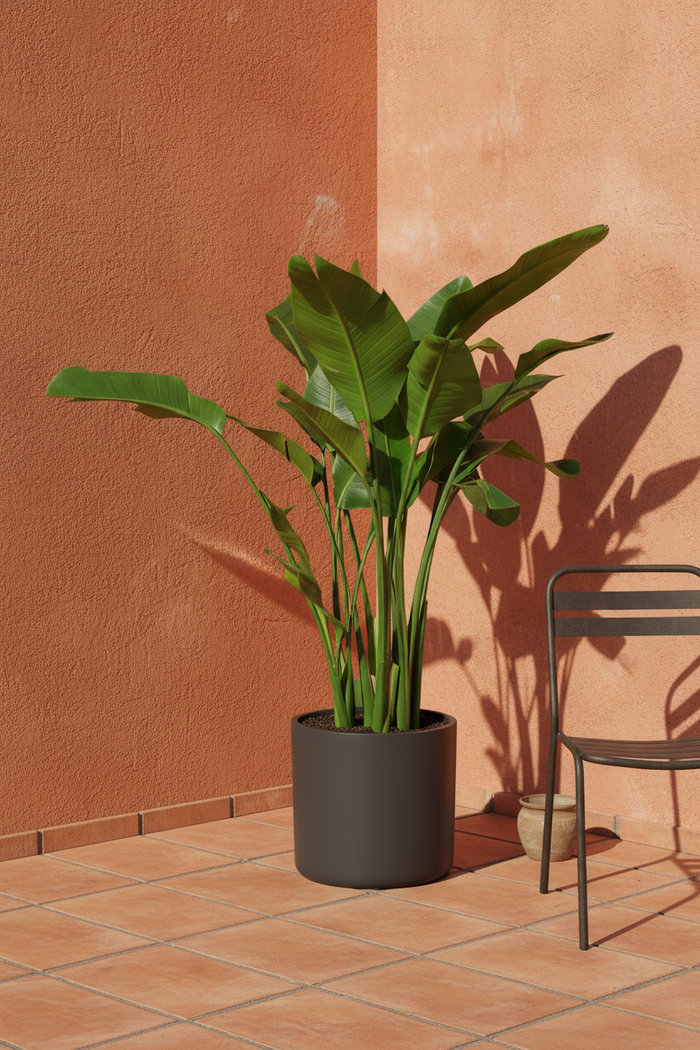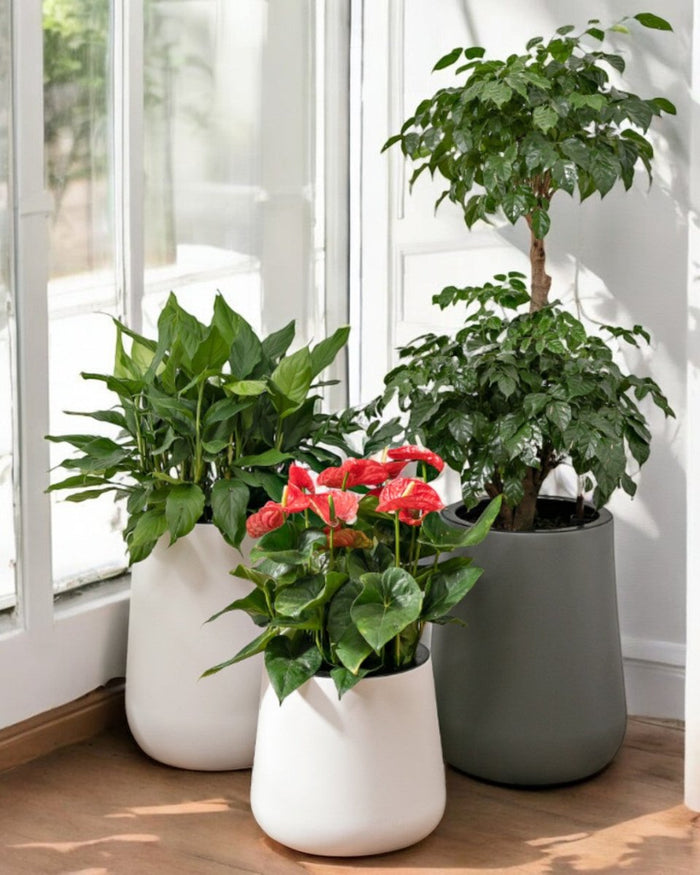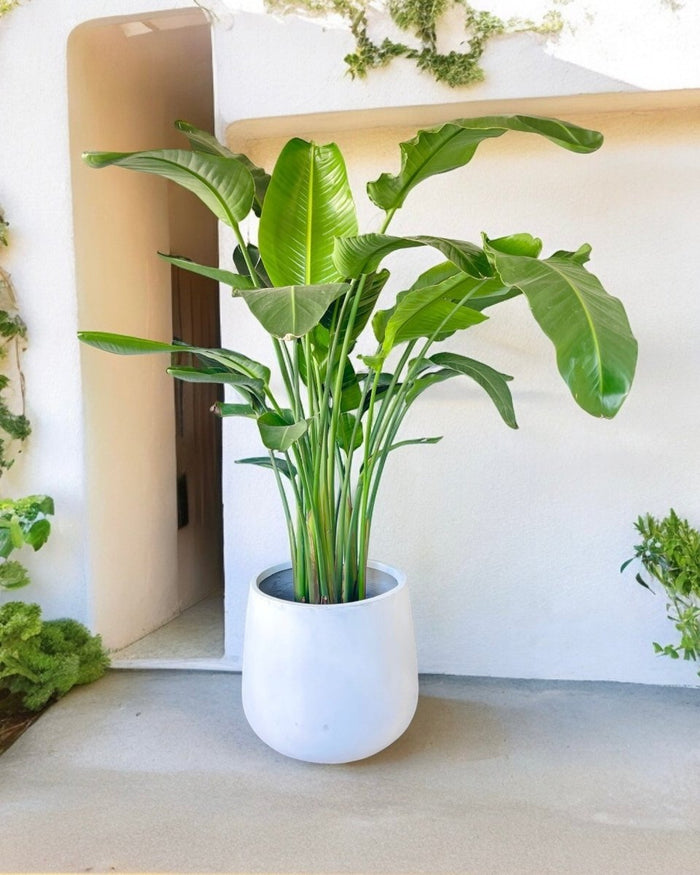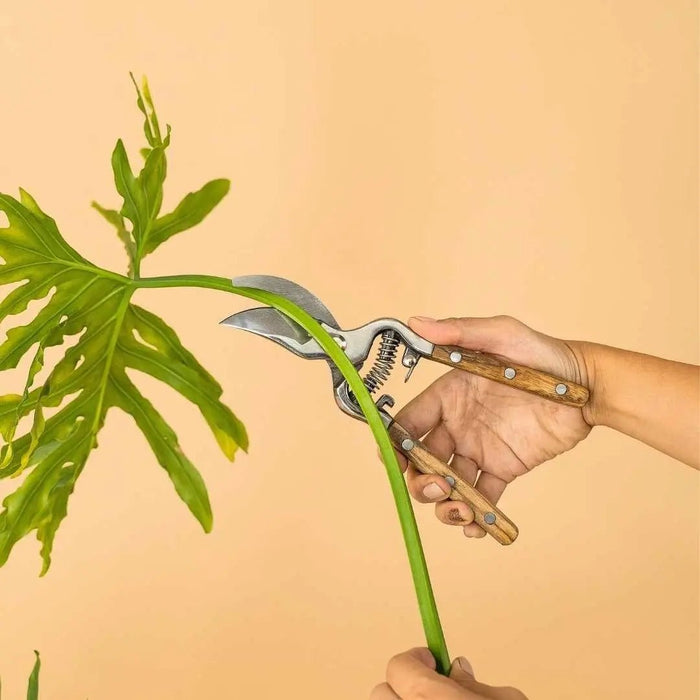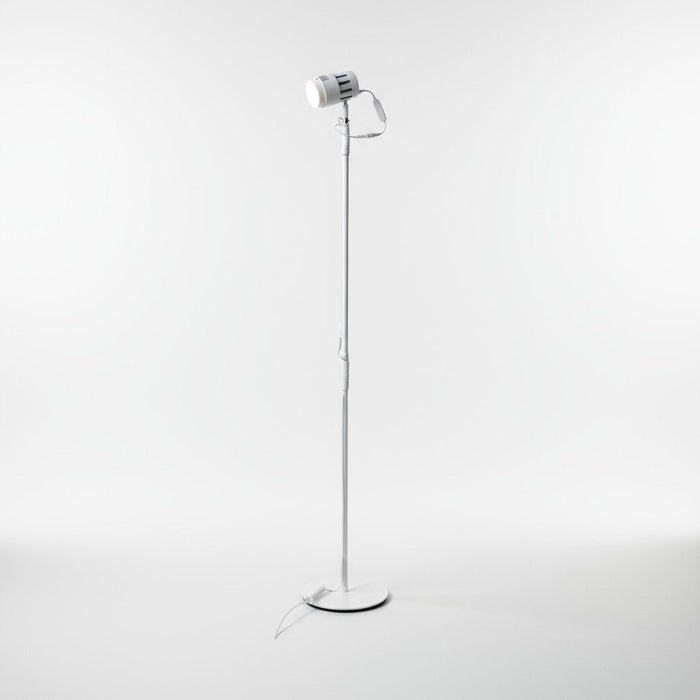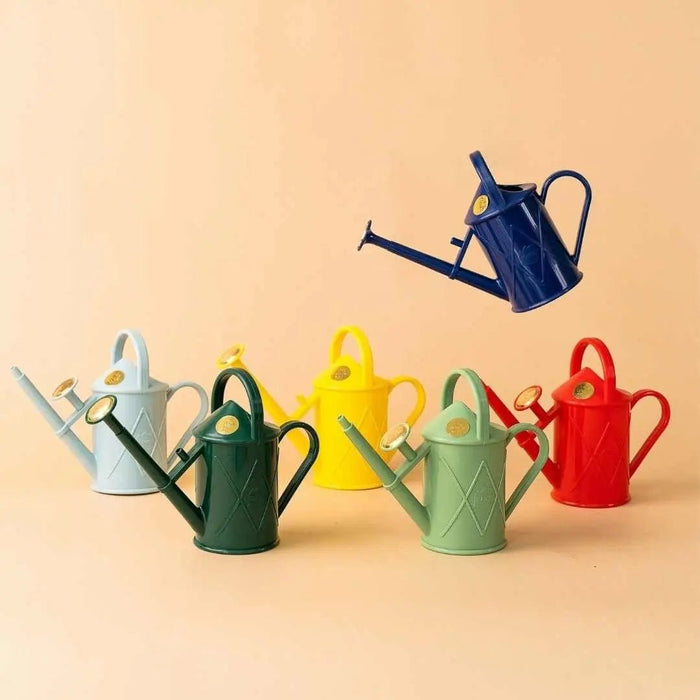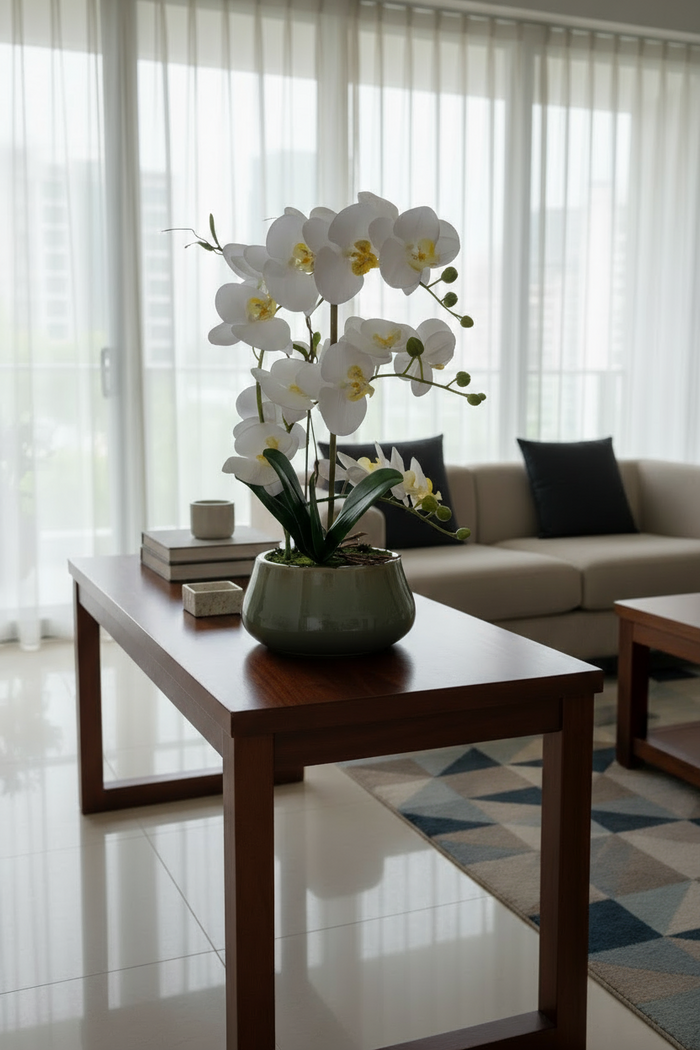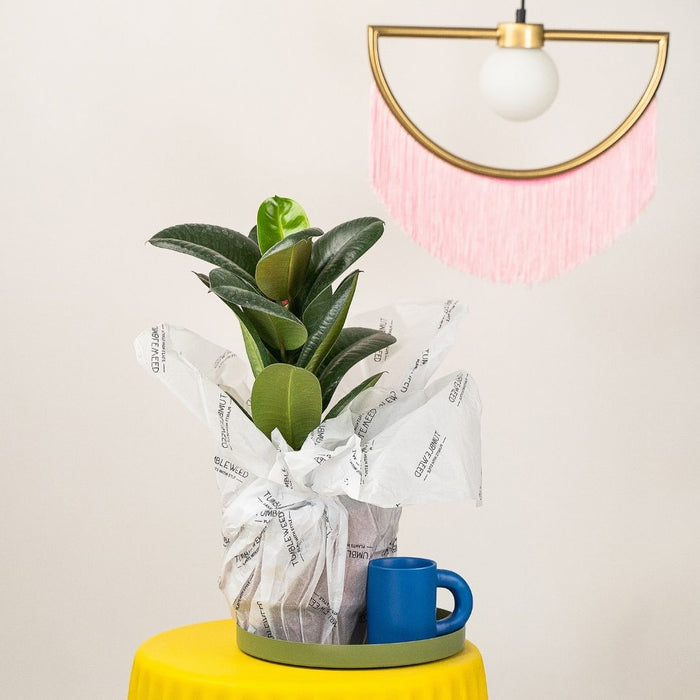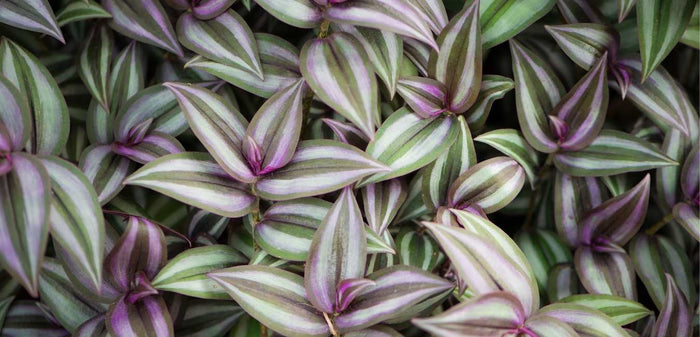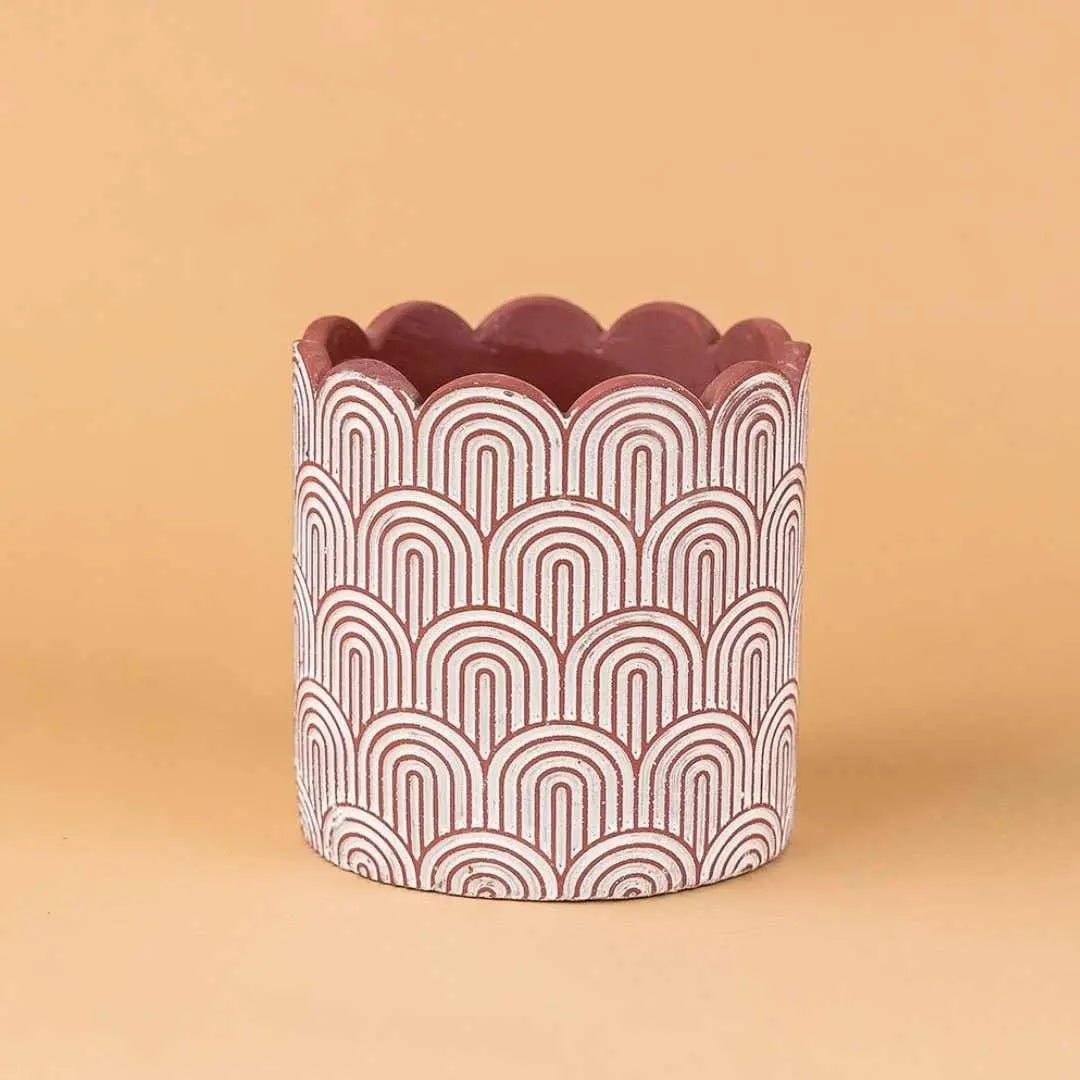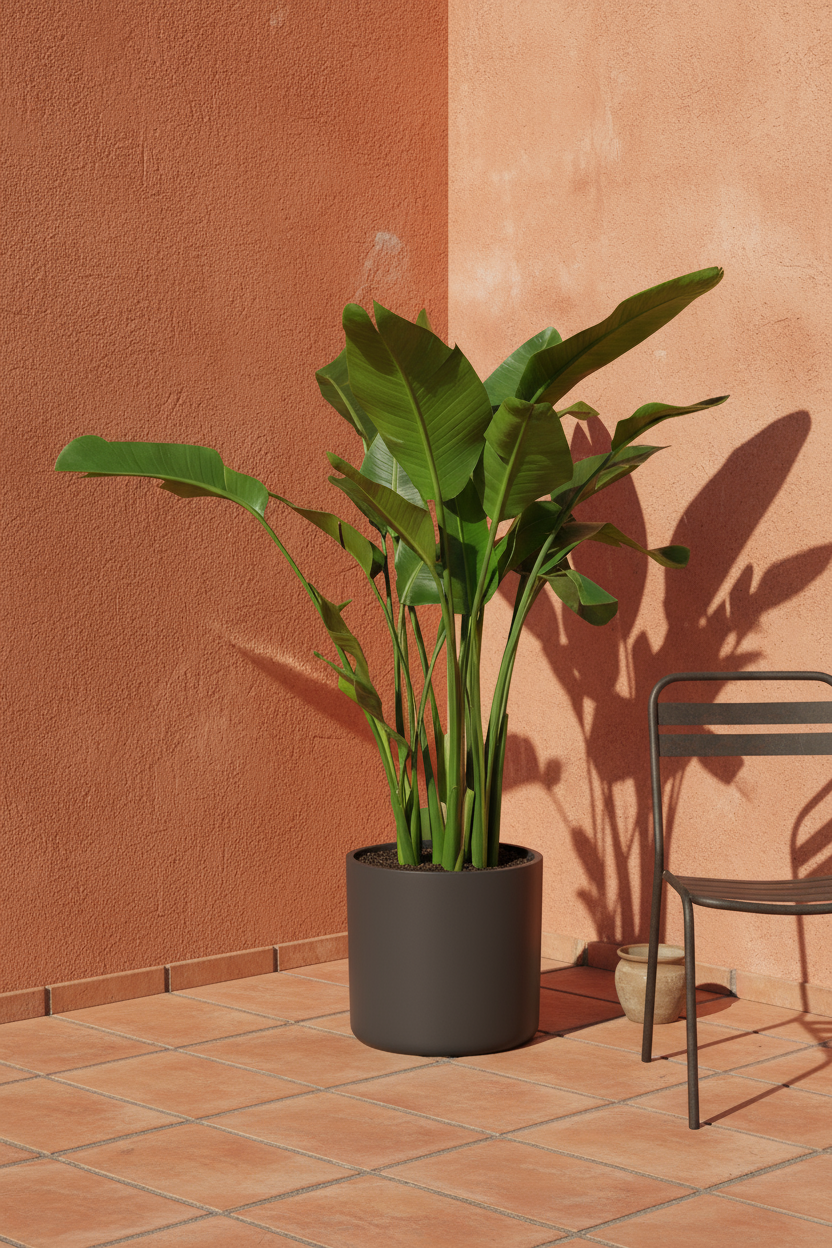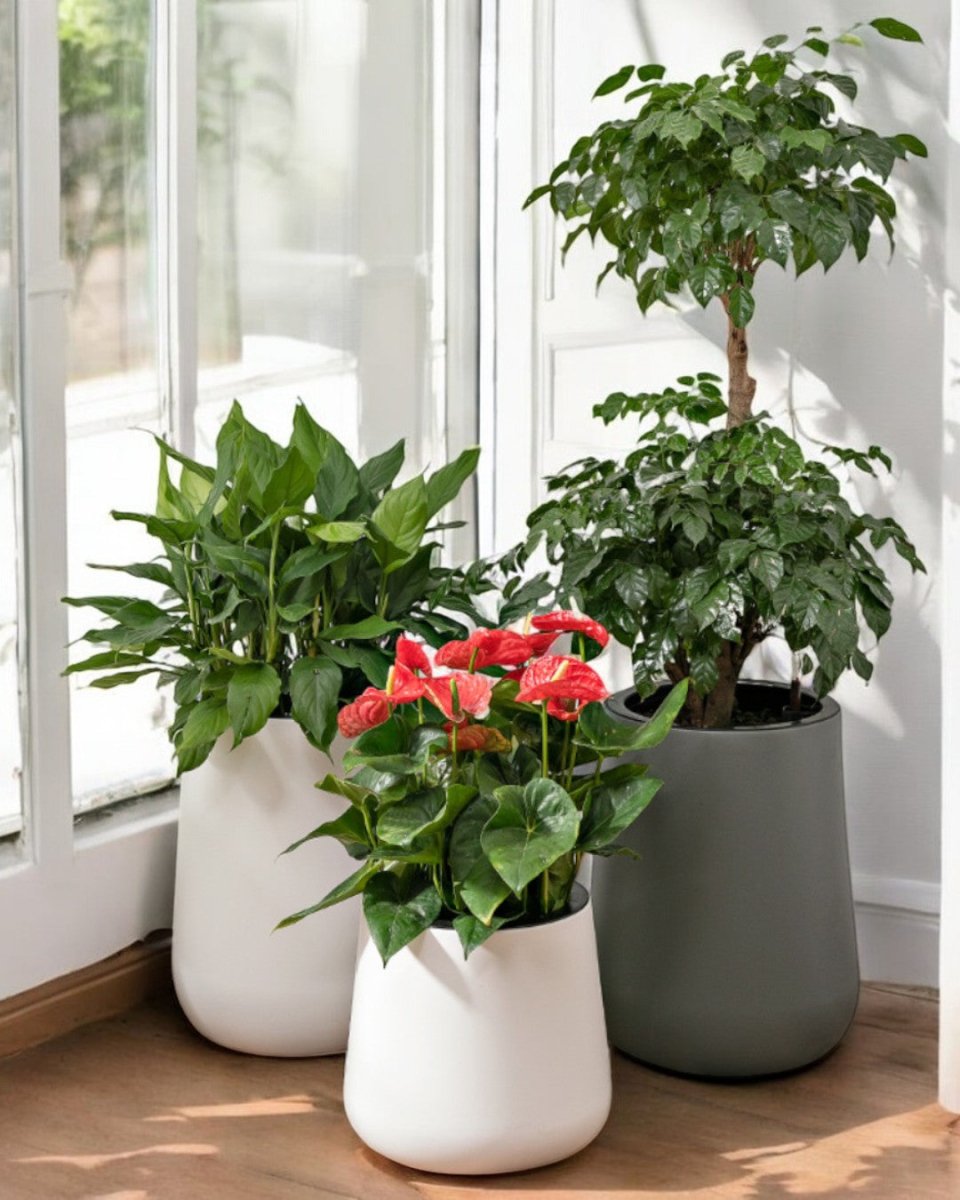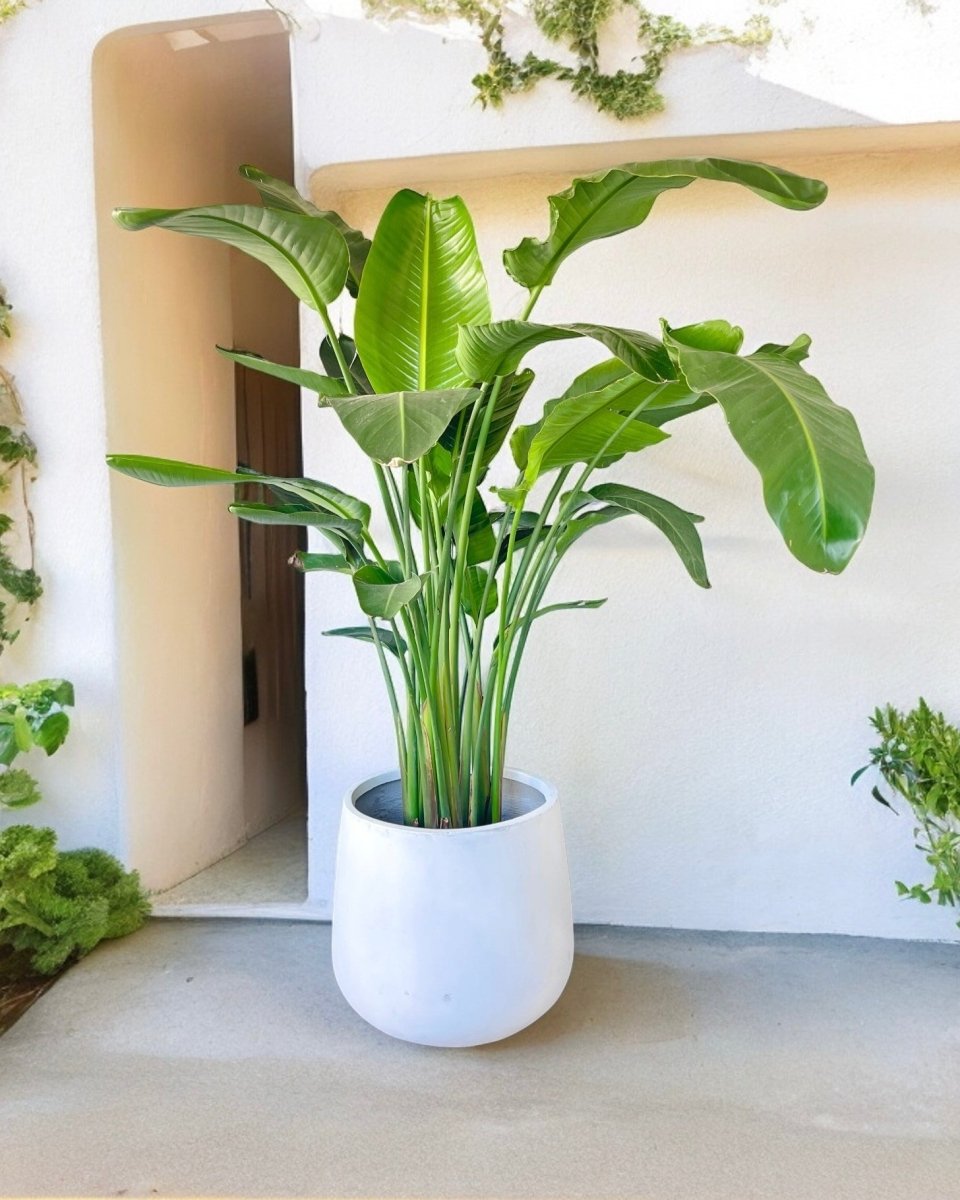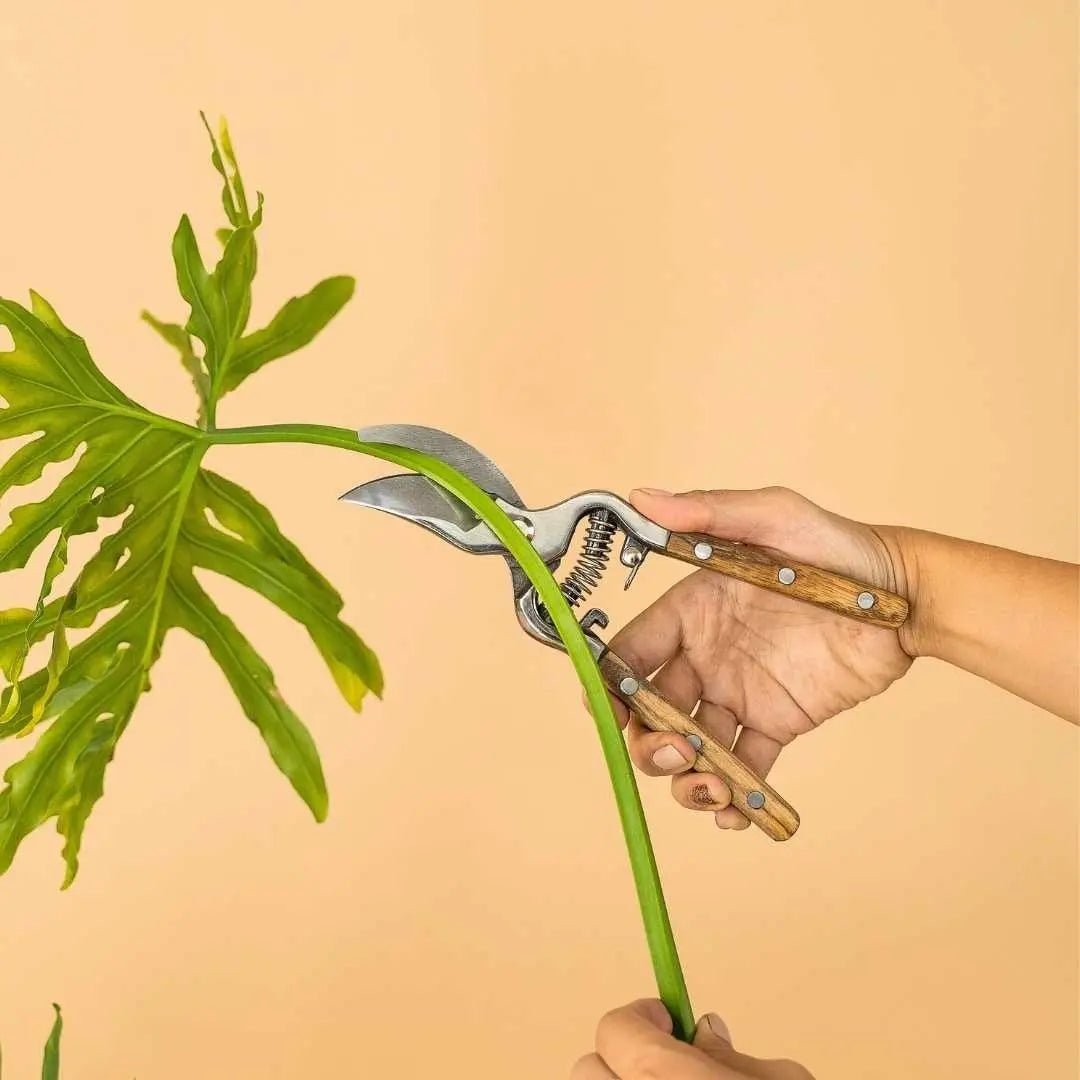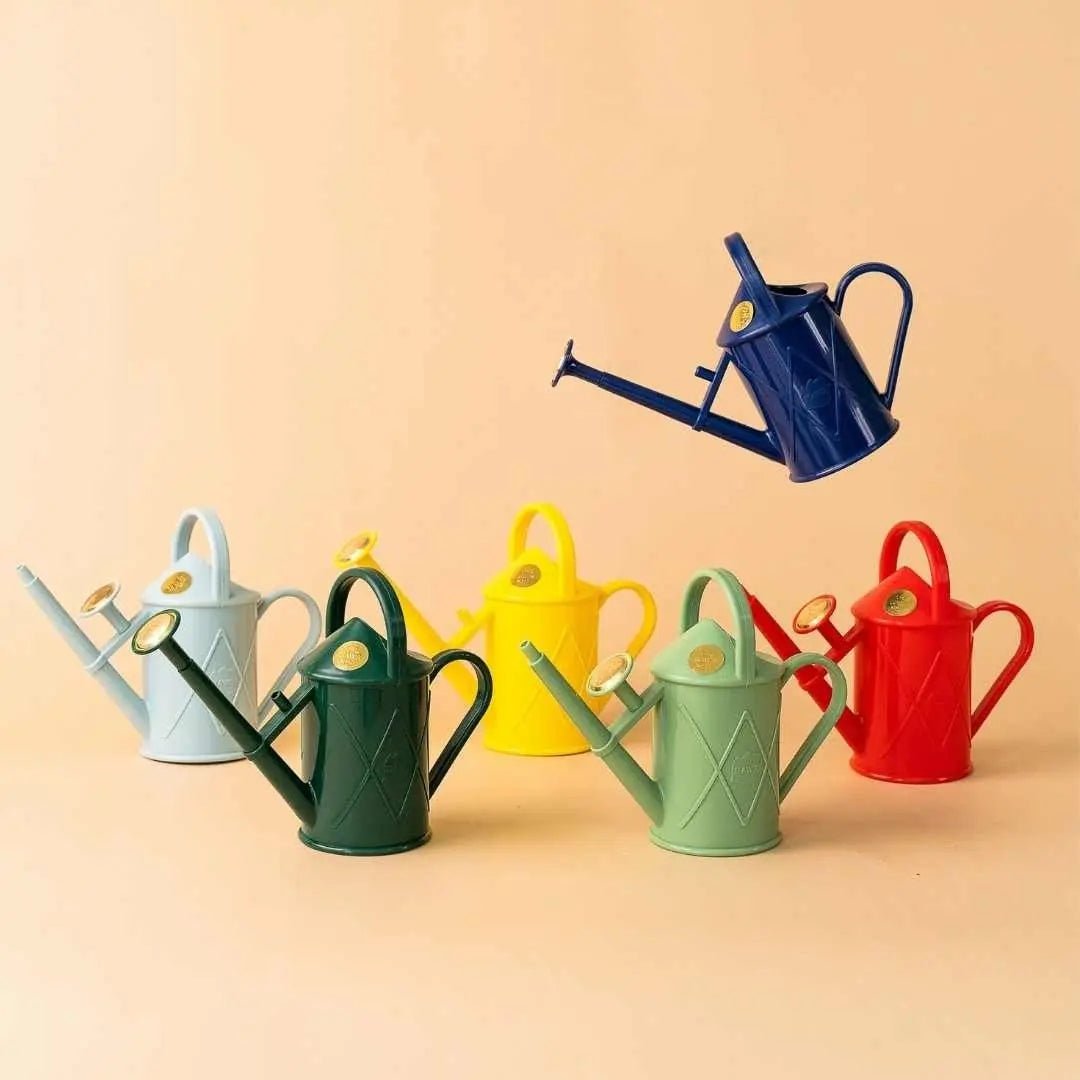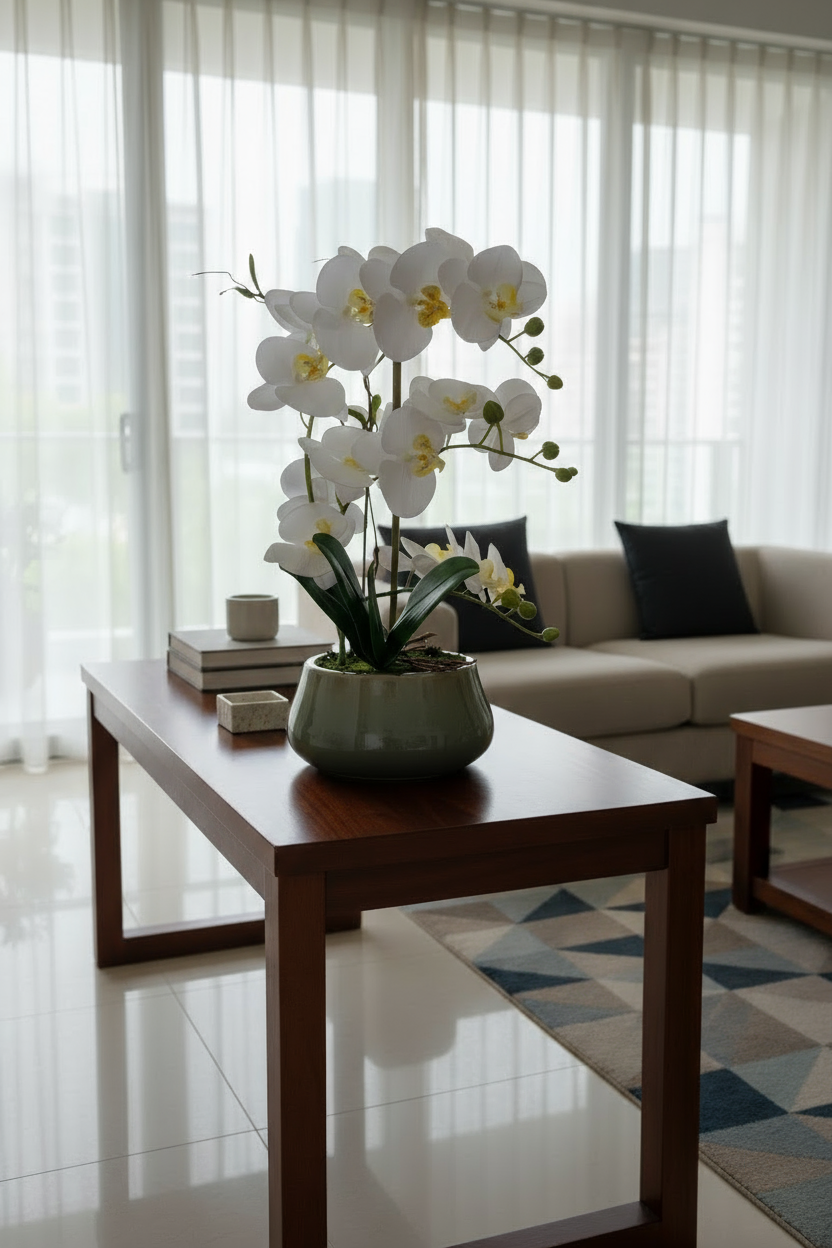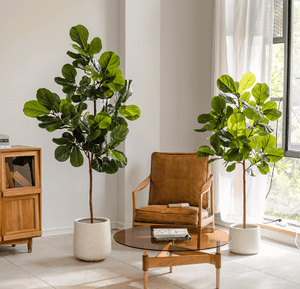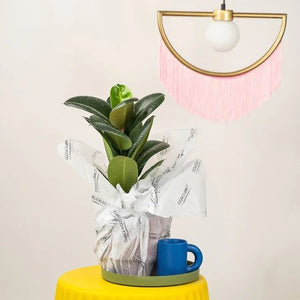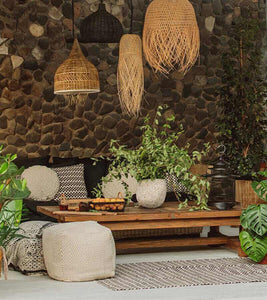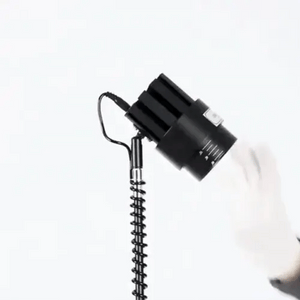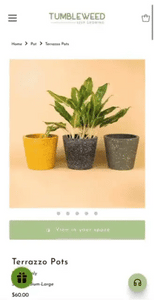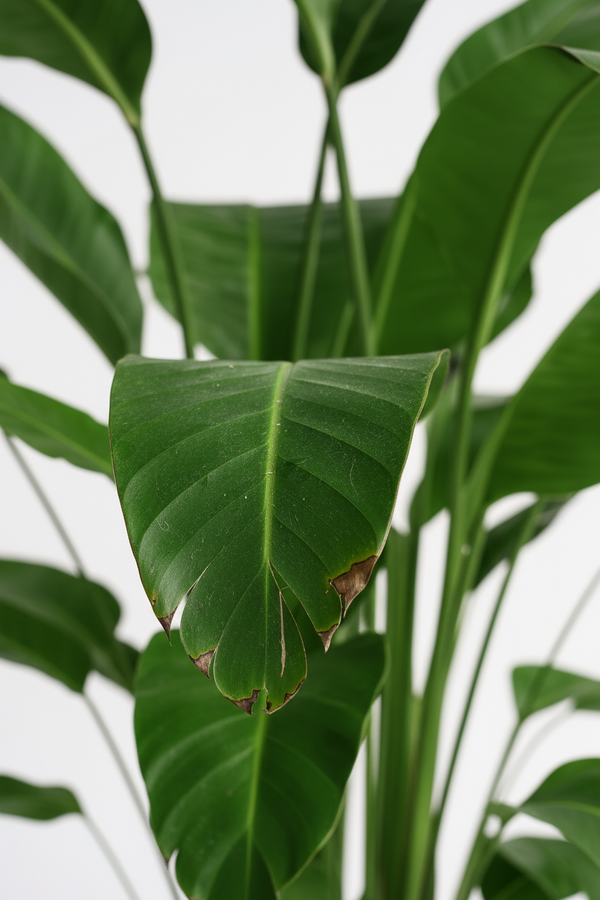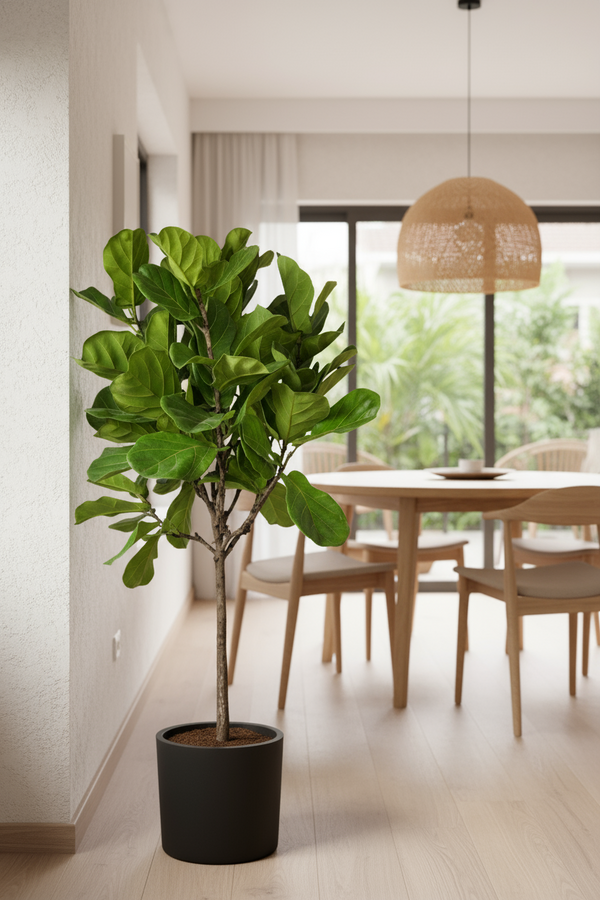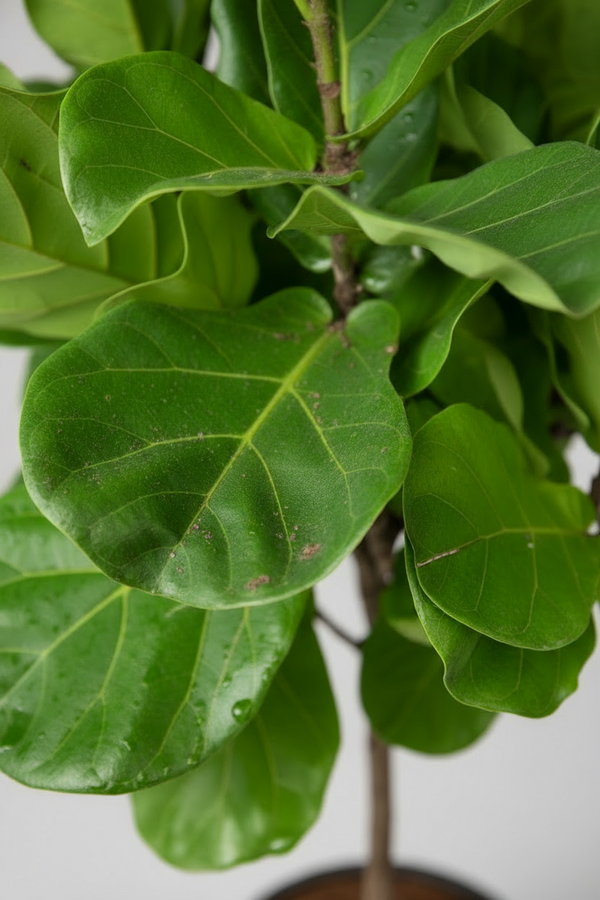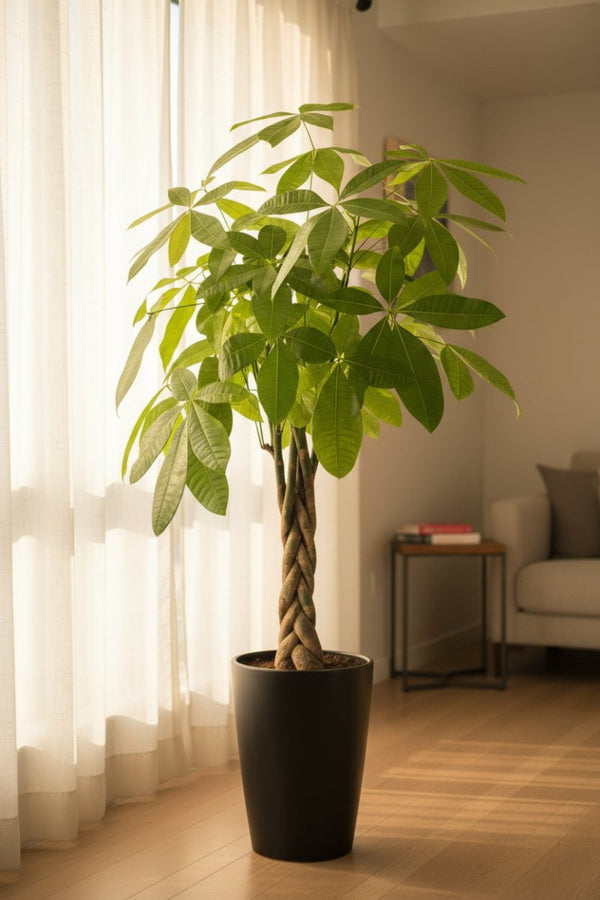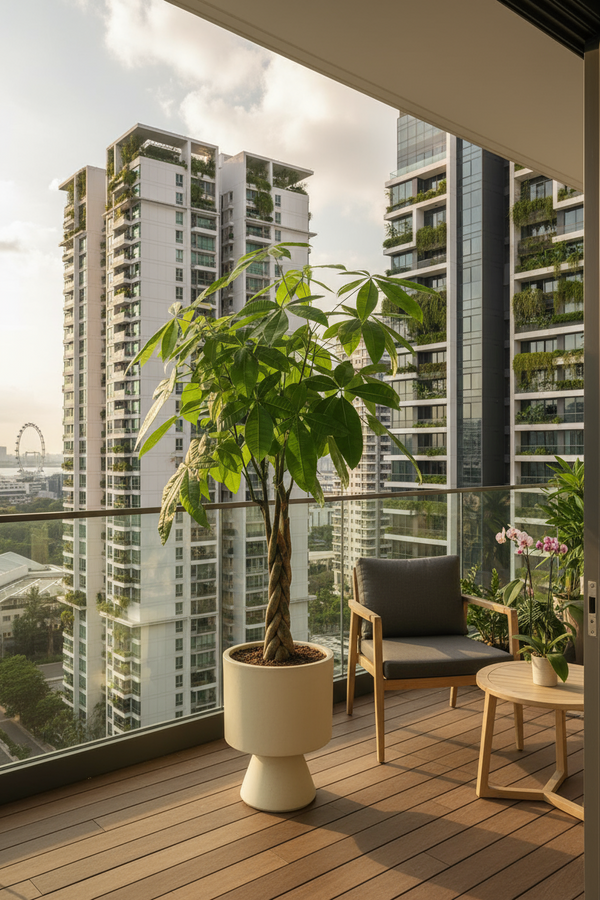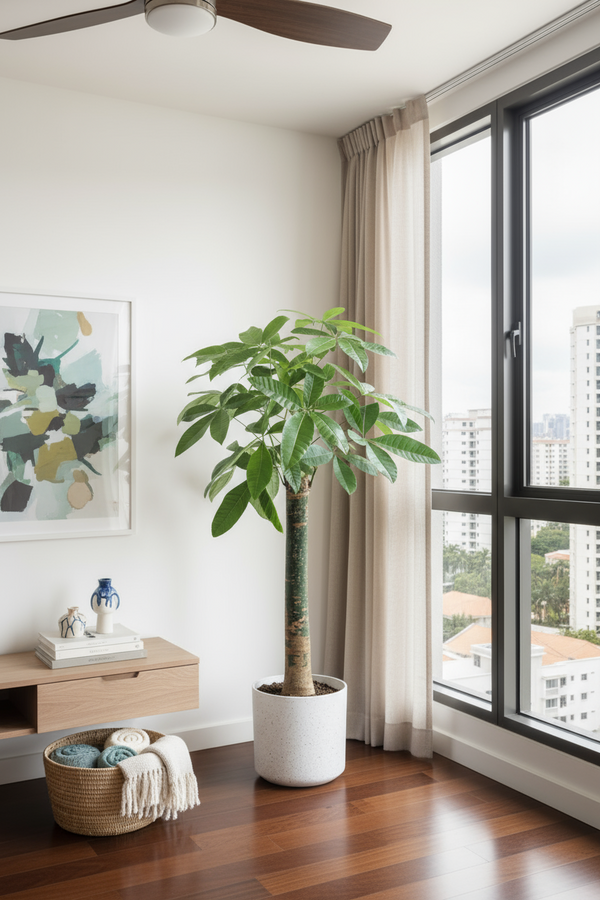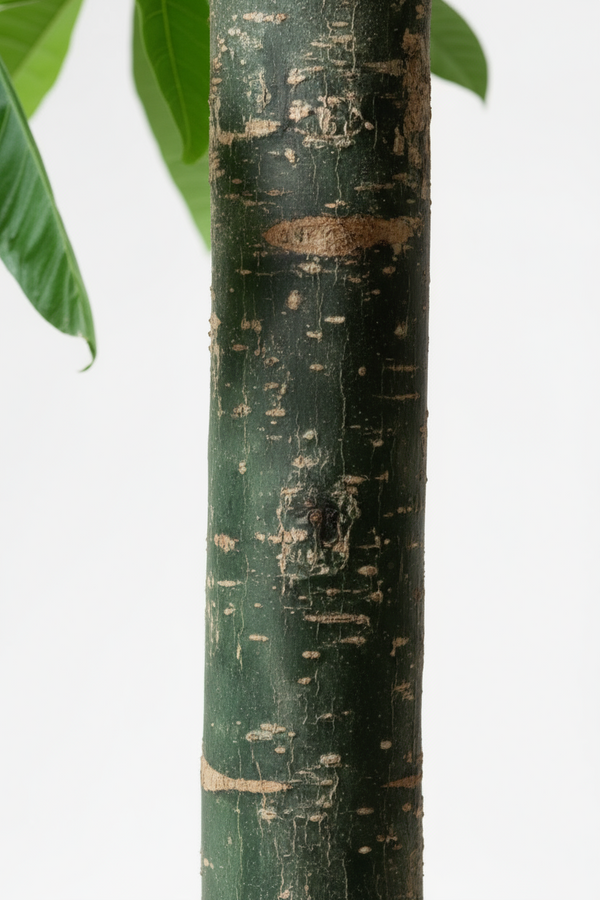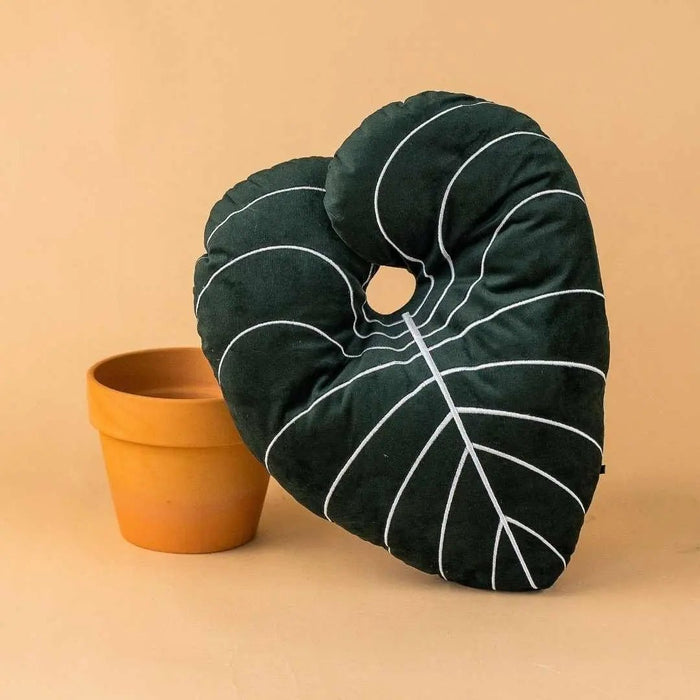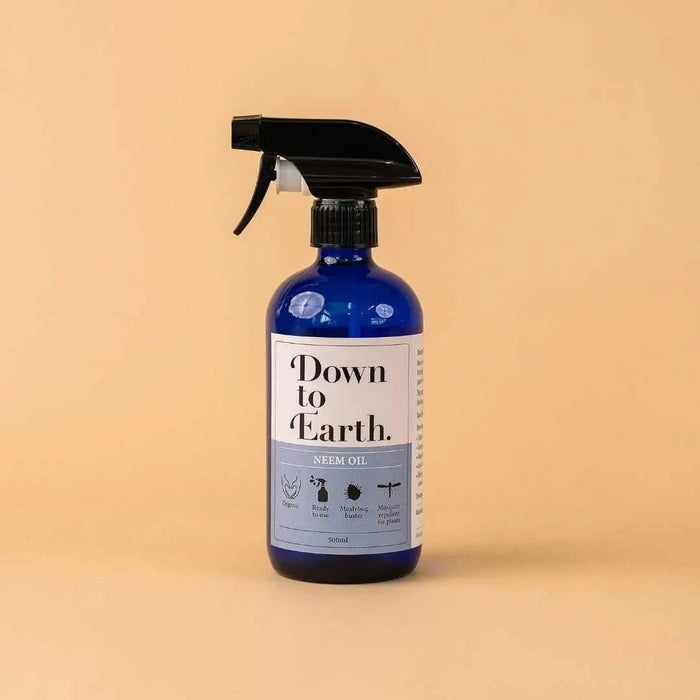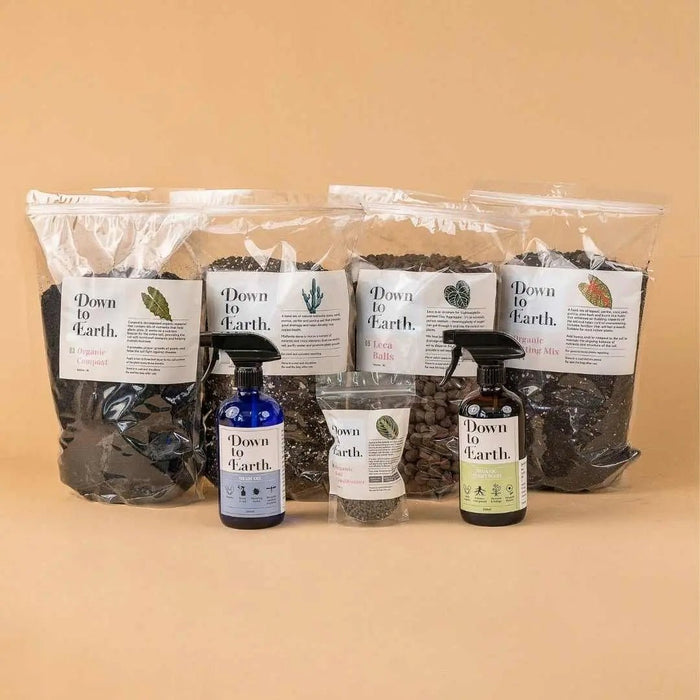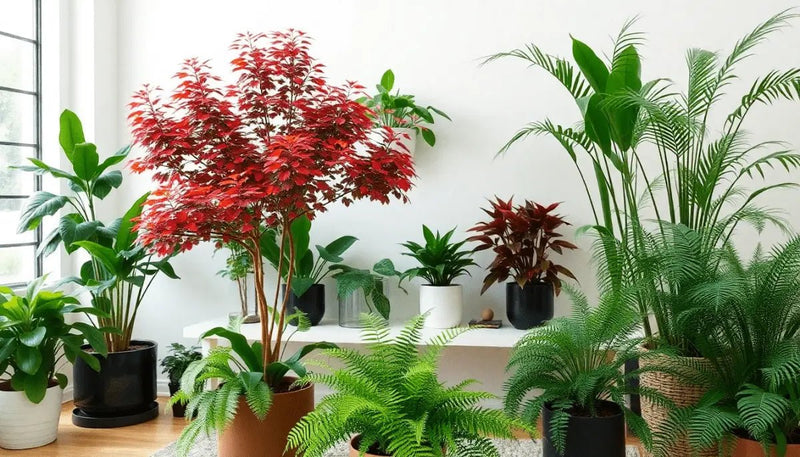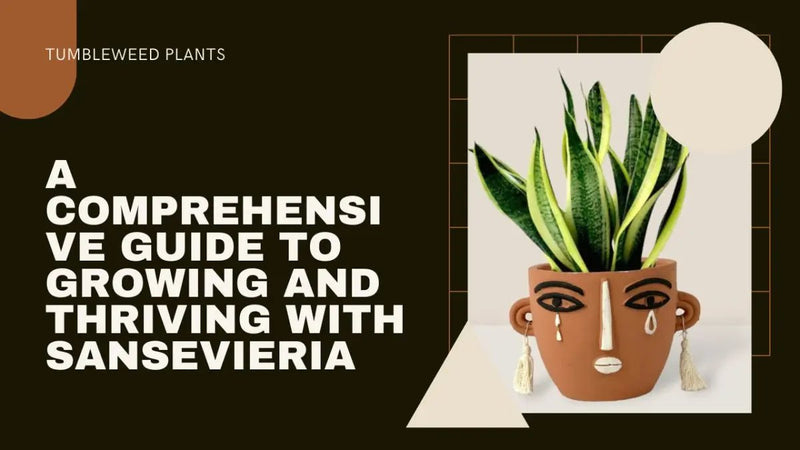Top Secrets to Keeping Your Houseplants Lush and Vibrant
Posted on March 18 2025
Understanding the Basics: Choosing the Right Houseplants for Your Space
Selecting houseplants that suit the environment of your home is crucial to ensuring their long-term health and vitality. Before purchasing plants, one needs to evaluate key factors such as natural light availability, temperature, and humidity levels. These environmental conditions vary between spaces, making it essential to match plants to your home’s unique characteristics.
Assessing Light Conditions
Light is one of the most vital components of plant care. A clear understanding of whether the room provides bright, indirect sunlight or has mostly shaded areas will help narrow down appropriate choices.
- Bright Light Areas: Plants like succulents, cacti, and fiddle-leaf figs thrive in spaces that receive abundant sunlight. Large south-facing windows are ideal for such varieties.
- Medium Light Areas: Pothos, peace lilies, and spider plants can adapt well to moderate light, often found near east-facing or west-facing windows.
- Low Light Areas: For darker corners, snake plants and ZZ plants are recommended due to their ability to tolerate low light conditions.
Understanding Space Constraints
The dimensions and layout of the space also influence the types of houseplants that can be incorporated. Larger plants, such as rubber trees or monstera, are suitable for spacious living rooms, while compact plants like miniature ferns or air plants fit well on bookshelves or desks.
Considering Indoor Climate
Temperature and humidity are indoor factors that affect plant health. Rooms with higher humidity, such as bathrooms, are ideal for tropical plants like Boston ferns or orchids. Conversely, drought-resistant plants like jade or aloe perform better in dry environments.
Other Considerations
Some plants can be toxic to pets or children. For households with pets, opting for non-toxic varieties such as Calatheas or parlor palms is a safer choice. Finally, it is beneficial to consider maintenance needs and one’s time commitment. Low-maintenance plants, such as philodendrons, are well-suited for those with busy schedules.
By aligning houseplant selection with environmental factors and personal preferences, individuals can create a thriving indoor garden tailored to their space.
The Importance of Proper Lighting: How to Match Plants with Light Conditions
Lighting is one of the most critical factors in maintaining healthy houseplants, as it directly impacts their growth, color, and overall vitality. Different plants have varying light requirements, and understanding these needs ensures they thrive in your indoor space. Proper lighting mimics a plant’s natural environment and allows it to perform photosynthesis effectively, which is essential for energy production and growth.
To match plants with suitable light conditions, it is necessary to identify the available light in a specific part of the home. Light intensity ranges from bright, indirect light to partial shade and low light. South-facing windows typically offer intense, bright light. East-facing windows provide medium light levels with gentle morning sun, while west-facing spaces often experience bright afternoon exposure. North-facing windows usually receive limited light, making them suitable for low-light-loving plants.
Plants fall into three main categories based on their lighting requirements.
- Full Sun Plants: These species need direct, unfiltered sunlight for at least six hours daily. Examples include succulents, cacti, and other desert-adapted varieties.
- Bright, Indirect Light Plants: These thrive in spaces with filtered light or near windows without direct sun exposure. Popular options include peace lilies, spider plants, and pothos.
- Low-Light Plants: Perfect for poorly lit corners, these plants include snake plants, ZZ plants, and some ferns.
Factors such as seasonal changes and window treatments can alter light levels, requiring adjustment to the plant’s placement. If natural light is insufficient, artificial lighting, such as grow lights, can supplement their needs. Consistently evaluating each plant’s growth patterns and leaf health reveals whether its lighting requirements are being met, allowing timely remedies to prevent stress or damage.
Mastering the Art of Watering: Frequency, Quality, and Common Mistakes
Understanding the nuances of watering houseplants is crucial for keeping them healthy and thriving. Proper watering not only ensures adequate hydration but also fosters root development and prevents stress-related diseases.
Frequency: The Key to Consistency
Each plant species has unique requirements for watering frequency, making it essential to tailor watering schedules to their needs. Succulents and cacti, for instance, thrive with infrequent watering due to their drought-resistant characteristics, while tropical plants like ferns and calatheas require more consistent moisture. Environmental factors such as humidity, light exposure, and potting substrate also influence watering schedules. It is best to feel the top inch of the soil—if it is dry to the touch, the plant likely needs water.
Quality of Water Matters
The type of water used can significantly impact plant health over time. Rainwater and distilled water are often preferred, as they are free of salts and chemicals commonly found in tap water. Hard water containing high calcium or magnesium levels can lead to deposits on leaves or in the soil. If tap water must be used, allowing it to sit out overnight helps dissipate chlorine and other harmful substances.
Common Mistakes to Avoid
Overwatering is one of the most frequent errors, leading to root rot and fungal issues. Signs of overwatering include yellowing leaves, a soggy soil surface, and a musty smell emanating from the pot. Conversely, underwatering results in crispy leaf edges, wilting, and stunted growth. Using pots with poor drainage can exacerbate issues, as water accumulates within the soil, suffocating the roots. Neglecting to adjust watering habits seasonally is another oversight; plants often require less water during dormant periods like winter.
Accurately gauging water needs and avoiding these common pitfalls ensures a greener, healthier indoor garden.
Optimal Soil and Potting Techniques for Healthy Growth
The foundation of any thriving houseplant begins with suitable soil and proper potting techniques. Selecting the right type of soil is critical, as it provides the necessary nutrients, aeration, and drainage for optimal plant growth. Houseplants typically thrive in well-draining soil mixes, often enhanced with organic matter such as compost or peat moss to retain moisture without waterlogging roots.
When preparing the potting environment, choosing an appropriately sized container is essential. A pot that is too small can constrain root growth, while an excessively large one can lead to overwatering and root rot. Drainage holes at the base ensure excess water escapes, preventing water from pooling at the bottom of the container. If using pots without drainage holes, layering coarse materials like gravel or stones at the bottom can help create a makeshift drainage system.
Repotting should occur periodically to avoid soil exhaustion and ensure adequate space for roots to expand. Generally, most houseplants benefit from repotting every 12 to 18 months, depending on their growth rate and root system. When repotting, transferring the plant to a slightly larger pot helps stimulate healthy development without overwhelming the roots. Care must be taken to gently untangle root-bound plants, as compact roots hinder nutrient absorption.
Different houseplants have varying soil needs. Cacti and succulents prefer gritty, sandy mixes that mimic arid conditions, while tropical plants benefit from rich, loamy soils mixed with perlite or vermiculite for better aeration. Ensuring the right mix for each species enhances their ability to absorb nutrients effectively.
A balance between moisture retention and drainage is crucial. Monitoring the soil’s moisture level helps determine when to water, fostering an environment where plants neither dry out nor experience root rot. Prioritizing these principles ensures robust root systems and sustained plant health.
The Role of Fertilizers: Feeding Your Plants for Maximum Vitality
Fertilizers play a critical role in maintaining the health and vigor of houseplants, providing essential nutrients that may not always be present in potting soil. They supply a blend of macronutrients, such as nitrogen, phosphorus, and potassium, alongside vital micronutrients, including calcium, magnesium, and iron. These nutrients ensure plants can grow, thrive, and develop vibrant foliage while promoting healthy root systems and flowering.
When choosing a fertilizer, it is important to consider your plant’s specific needs. Not all houseplants require the same nutrient composition; for example, flowering plants often benefit from fertilizers higher in phosphorus, while leafy plants thrive on nitrogen-rich formulas. Fertilizers are available in various forms, such as liquid, granular, and slow-release options, offering flexibility for different maintenance schedules. Understanding the differences between these types helps avoid over-fertilization, which can harm plants by causing root burn or nutrient imbalances.
Timing is also essential in fertilizer application. Most indoor plants experience active growth periods during spring and summer, which is when they require more nutrients. During the colder months, growth slows, and reduced fertilization prevents unnecessary buildup of unused minerals. Regular feeding, tailored to this cycle, keeps plants nourished without fostering dependency.
Furthermore, water-soluble fertilizers allow for direct absorption through the roots, enhancing nutrient uptake efficiency. Organic fertilizers, composed of natural materials like compost or bone meal, also offer a sustainable solution while improving soil texture over time. Selecting high-quality products ensures plants receive the best care, enabling long-term vitality.
By closely monitoring plant growth and health, adjusting fertilizer type or quantity as necessary becomes seamless. Recognizing signs of deficiency, such as pale or yellowing leaves, can help you intervene early, ensuring your houseplants continue to flourish with the support they need.
Temperature and Humidity: Creating the Perfect Microclimate
Houseplants thrive in environments that closely mimic their natural habitats, making temperature and humidity critical factors for their survival. Providing optimal conditions ensures plants stay lush and vibrant, while avoiding stress that can lead to yellowing leaves or stunted growth.
The Ideal Temperature Range
Each species of houseplant has a preferred temperature range, generally between 65°F and 75°F. Tropical plants, such as ferns and pothos, typically flourish in warmer temperatures, whereas succulents and cacti adapt well to cooler ranges. Extreme temperature fluctuations can harm indoor foliage, stressing plants and impairing photosynthesis. Protect plants from drafts caused by air conditioners, heating vents, and windows with fluctuating temperatures.
How Humidity Impacts Plants
Humidity levels play an integral role in maintaining plant health. Tropical plants favor humidity levels between 50% and 80%, as dry air may cause browning leaf edges or hinder growth. Conversely, arid region plants like succulents prefer lower humidity levels, around 30% to 40%. Plants absorb moisture through their leaves, so maintaining an environment with suitable air moisture helps fulfill their hydration needs.
Practical Solutions to Regulate Microclimates
To maintain consistent humidity, growers can use tools such as humidifiers and humidity trays. Humidifiers work well for large indoor spaces, while trays filled with pebbles and water increase localized humidity levels around plants. Grouping plants together creates a natural microenvironment as evaporating moisture raises humidity collectively.
For temperature management, positioning plants at least a few feet away from windows can protect them from extreme cold or heat. Use a thermometer to monitor indoor temperatures, ensuring they stay within the optimal range. Seasonal adjustments to heater or air conditioning settings may also be necessary.
By understanding and controlling temperature and humidity, plant enthusiasts can create the specific conditions needed to keep houseplants healthy and thriving year-round.
Pruning and Cleaning: Essential Maintenance for Lush Foliage
Pruning and cleaning houseplants are integral to their overall health and vitality. Neglecting these simple steps can lead to overcrowded growth, poor air circulation, and a decline in the plant’s appearance. By taking the time to trim and clean, it becomes possible to promote lush, vibrant foliage while preventing the onset of pests and disease.
Pruning serves several critical purposes. It helps remove dead or damaged leaves, redirecting the plant’s energy toward healthier growth. Additionally, pruning allows for the removal of leggy stems or overgrown sections, encouraging bushier and fuller foliage. When pruning, it is essential to use clean, sharp scissors or pruning shears to minimize damage. Cut just above a leaf node or bud to stimulate regrowth and maintain a natural shape.
Cleaning houseplants is equally crucial as it helps remove dust and debris that accumulate on the leaves. Dust can hinder a plant’s ability to photosynthesize by blocking sunlight from reaching its surfaces. Wipe large, flat leaves gently with a damp cloth while supporting the underside. For smaller or textured leaves, a soft brush or a lukewarm water mist can clean effectively. However, avoid over-saturating the plant as excess moisture could encourage fungal issues.
It is important to identify any pests or early signs of disease during the cleaning process. Look for discoloration, sticky residue, or specks on the underside of leaves, and take action promptly if issues are detected. Combining regular pruning and cleaning not only improves the plant’s aesthetics but also fosters an environment for consistent growth and health.
Dealing with Common Pests and Diseases
Houseplants, while beautiful and beneficial to indoor environments, can occasionally fall victim to pests and diseases if not properly monitored. The key to maintaining their health lies in early detection and appropriate intervention techniques.
Common Pests
Several pests can infest houseplants, with the most frequent offenders being:
Spider Mites: These almost-microscopic pests create fine webbing on foliage while sucking the sap from plants, causing leaves to become yellow or speckled. Regular misting of plants can reduce infestations as spider mites thrive in dry conditions.
Mealybugs: Recognizable by their cotton-like appearance, mealybugs cluster on stems and leaves. They weaken plants by feeding on their sap. A solution of water and gentle dish soap can effectively remove them when applied using a cotton swab.
Fungus Gnats: Often mistaken for fruit flies, these pests are drawn to damp soil. Overwatering is frequently the cause. Allowing the topsoil to dry between waterings can help eliminate the gnats, while sticky traps can address adult insects.
Scale Insects: These pests appear as small, immobile bumps on stems and leaves, and they secrete a sticky residue. Removal with a soft cloth or horticultural oil can offer relief.
Common Diseases
Fungal and bacterial diseases often result from inadequate air circulation, overwatering, or poor hygiene. The most prevalent diseases include:
Root Rot: Caused by consistently waterlogged soil, root rot can lead to wilting and darkened roots. Repotting in dry, well-draining soil and reducing watering can save affected plants.
Powdery Mildew: This fungal disease appears as a white, powdery residue on leaves and stems. Increasing air circulation and applying sulfur-based fungicides can prevent its spread.
Leaf Spot: Characterized by brown or black spots with yellow halos, leaf spot thrives in humid conditions. Promptly removing infected leaves and improving ventilation helps mitigate the issue.
Regular observation, preventative care, and targeted treatments are essential to protect houseplants from pests and diseases effectively.
Repotting 101: When, Why, and How to Give Your Plants More Room
Repotting is an essential aspect of plant care, ensuring optimal growth and vibrancy. Understanding when, why, and how to repot your plants can save them from stunted growth and declining health.
When to Repot
Plants often give clear indications when they need more space:
- Roots outgrowing the pot: Visible roots emerging from drainage holes or circling the surface signal a need for larger quarters.
- Declining plant health: Stunted growth, yellowing leaves, or wilting despite proper care may indicate root-bound conditions.
- Soil compaction: Over time, soil can lose oxygenation and drainage efficiency, leaving roots struggling for nutrients.
- Growth cycle: Early spring, when plants enter active growth phases, is typically the best time for repotting. Avoid repotting during dormancy.
Why Repotting Matters
Repotting provides more space for root development, improves nutrient availability, and fosters an optimal growing environment. Fresh soil often replenishes depleted nutrients and enhances aeration. It also allows inspection of root health, enabling removal of dead or diseased roots. By addressing overcrowding, repotting mitigates competition for nutrients and water while promoting sustained growth.
How to Repot Properly
Proper techniques can ease the transition process:
- Select a suitable pot: Choose a container one to two inches larger in diameter than the current pot, with adequate drainage holes.
- Prepare fresh soil: Use a high-quality potting mix tailored to your plant’s needs, ensuring proper drainage and nutrient balance.
- Gently loosen the plant: Tilt the pot and slide out the root ball, being careful not to damage the roots. Remove excess old soil, particularly around the root zone.
- Prune if necessary: Trim any dead, rotting, or excessively long roots to encourage healthier growth.
- Repot with care: Center the plant in its new pot, fill the space around the roots with fresh soil, and gently press it down to remove air pockets.
- Water thoroughly: Hydrate the plant after repotting to help it settle into its new environment.
Attention to these details maximizes your plant’s chances of thriving in its refreshed home.
Building a Routine: Daily, Weekly, and Seasonal Care Practices
Developing a structured care routine for houseplants ensures consistency and keeps them thriving. Each plant requires attention tailored to its needs, and dividing care into daily, weekly, and seasonal intervals helps manage this efficiently.
Daily Practices
- Monitoring Soil Moisture: Checking soil moisture levels daily prevents overwatering or underwatering. A quick finger dip into the soil can indicate if the plant needs hydration.
- Inspecting for Pests: Regularly observing leaves and stems protects plants from infestations. Common intruders such as spider mites, aphids, or mealybugs should be addressed promptly.
- Adjusting Light Exposure: Light conditions change throughout the day. Repositioning plants as needed ensures they receive adequate sunlight, especially those near windows or artificial grow lights.
Weekly Practices
- Watering Schedule: Most houseplants thrive with consistent watering once a week, though this varies by species and environmental factors. Letting the topsoil dry for plants like succulents and watering tropical plants more deeply works effectively.
- Dusting Leaves: Wiping leaves weekly with a damp cloth clears dust accumulation, enhancing photosynthesis and keeping plants vibrant.
- Rotating Plants: Turning plants weekly ensures an even distribution of light, helping them grow symmetrically and avoiding leaning toward a specific light source.
Seasonal Practices
- Adjusting Watering and Feeding: During active growth seasons like spring and summer, plants often require more frequent watering and fertilization. Scaling back during fall and winter aligns with their natural dormancy periods.
- Repotting and Pruning: Spring is ideal for repotting to provide fresh nutrients and space for root expansion. Pruning during the same season encourages healthy new growth and removes dead or diseased foliage.
- Temperature and Humidity Changes: In colder months, maintaining optimal indoor temperatures and increasing humidity with tools like pebble trays or humidifiers preserves plant health.
With adherence to appropriate daily, weekly, and seasonal routines, houseplants remain lush and vibrant throughout the year.
Identifying Signs of Stress: Diagnosing and Solving Common Problems
Houseplants can exhibit various signs of stress, often serving as warning indicators of underlying issues. Spotting these early can be vital to restoring their health and vigor. Recognizing the symptoms and understanding their causes enables effective intervention. Below are some common signs of stress and ways to address them.
Signs of Stress in Houseplants
Yellowing Leaves Yellow leaves typically indicate overwatering or insufficient drainage. Waterlogged roots are deprived of oxygen, causing the foliage to wilt or discolor. However, in low-light conditions, yellowing may be a sign of nutrient deficiency.
Crispy or Brown Leaf Edges Browning around the edges often signals underwatering or low humidity. Excessive fertilization can also result in salt buildup within the soil, which damages roots and manifests as browning.
Drooping Leaves Droopiness can stem from inconsistent watering. Both under- and overwatering can stress the plant, as can sudden environmental changes, such as abrupt temperature shifts or drafts.
Wilting Despite Moist Soil If the soil remains damp yet wilting occurs, root rot may be the issue. Root rot typically arises due to poor drainage or persistently soggy soil, requiring immediate intervention.
Leaf Spots or Mold Black or brown spots could signify fungal infections, while white, fuzzy growths often indicate powdery mildew. Both may result from high humidity levels or inadequate air circulation.
Steps to Address Common Problems
- For overwatering, ensure soil drains freely, and consider repotting the plant in a fresh potting mix.
- If humidity is the issue, introduce a humidifier or group plants together to create a microenvironment.
- Prune damaged or diseased foliage and rotate plants regularly to prevent fungal infections.
- Regularly inspect leaves and soil to identify problems early, ensuring the plant’s environment remains stable.
By effectively diagnosing these signs, one can create a nurturing environment for houseplants to flourish.
Stylish Displays and Groupings: Maximizing Aesthetics and Plant Health
Creating an inviting and vibrant indoor space goes beyond selecting plant species; it hinges on how these plants are displayed and grouped. Thoughtful arrangements not only enhance the aesthetic appeal but also contribute actively to the health and longevity of the plants.
Start by considering the natural light each area of the home receives. South-facing windows, for example, are ideal for sun-loving plants such as succulents or ficus. Meanwhile, low-light corners can house shade-tolerant varieties like pothos or philodendrons. Placing plants in locations that match their light requirements supports healthy growth while allowing their foliage to shine.
Grouping plants with similar care needs is another key element. Plants that thrive in high humidity, such as ferns and calatheas, can be clustered in bathrooms or kitchens where moisture levels are naturally higher. This ensures a microclimate suitable for these plants, reducing the risk of overwatering or dehydration.
Choosing complementary pots and containers creates cohesion in the display. Neutral-toned planters allow vibrant greens to take center stage, while bold, decorative pots can add visual interest. Opt for containers made of breathable materials like terracotta for plants that require well-aerated roots. Including stands and macramé hangers can introduce height variations, adding depth to the arrangement.
To maximize aesthetics, vary leaf shapes, sizes, and colors within a grouping. Combining tall, structural plants with trailing types or small, bushy species creates dynamic displays. For larger spaces, place statement plants like monstera or fiddle-leaf fig as focal points, while smaller plants can fill in gaps on shelves and side tables.
Regularly rotating arrangements ensures even light exposure, which prevents uneven growth. It also helps refresh the visual appeal of the space. Adding appropriate lighting, like grow lights for dimmer areas, balances both form and function.
The Psychological and Environmental Benefits of Healthy Houseplants
Healthy houseplants provide more than aesthetic appeal; they offer a range of psychological and environmental benefits. Research consistently highlights how greenery indoors can enhance mental well-being, reduce stress, and even improve mood. By fostering a connection with nature, plants contribute to emotional resilience and a calming atmosphere. This effect is amplified through activities like watering or pruning, which often promote mindfulness and a sense of purpose.
Houseplants influence productivity in workplaces and home offices, as studies indicate they can boost focus and creativity. People surrounded by greenery reported being more engaged and energized in their tasks. Plants also act as natural stress relievers. Exposure to their gentle presence has been shown to lower blood pressure and heart rate, fostering a tranquil environment conducive to relaxation.
From an environmental perspective, houseplants help purify indoor air. Many species, such as peace lilies, spider plants, and pothos, absorb toxins like formaldehyde, benzene, and carbon dioxide, replacing them with oxygen. This cleansing process enhances respiratory health, particularly in tightly sealed areas with limited fresh air flow. Additionally, plants increase indoor humidity through transpiration, which can alleviate dry skin, irritated eyes, and respiratory challenges, especially in arid environments or during colder months.
Plants also contribute to noise reduction by absorbing sound waves through their leaves and stems, softening the acoustics of a room. This makes them especially beneficial in urban settings or busy households. The multifaceted advantages of healthy houseplants extend beyond mere decoration, serving as tools for mental clarity and environmental improvement, directly enriching daily living spaces.
FAQs and Expert Tips for Long-Term Plant Success
FAQs
Q: How often should houseplants be watered? A: The frequency depends on the plant species, pot size, and environmental factors like humidity and light. Most plants thrive when their soil is allowed to partially dry out between waterings. Checking soil moisture with a finger or moisture meter is recommended.
Q: Can houseplants survive in low-light areas? A: Some houseplants, like pothos, snake plants, and ZZ plants, are well-suited for low-light environments. However, all plants need some light to photosynthesize. Supplementing with grow lights can help if natural light is insufficient.
Q: Why are my plant’s leaves turning yellow? A: Yellowing leaves often indicate overwatering, poor drainage, or root rot. It may also be due to nutrient deficiencies, pests, or sudden environmental changes. Assess the plant’s care routine and address the specific issue accordingly.
Q: Do houseplants need fertilizer? A: Yes, fertilizing houseplants helps replenish nutrients in the soil. Use a balanced, water-soluble fertilizer during their active growing season (spring and summer). Reduce or suspend feeding in winter unless dealing with tropical, actively growing plants.
Q: Should houseplants be repotted? How often? A: Most houseplants benefit from repotting every 1–2 years. Signs a plant needs repotting include roots growing out of the drainage holes, stunted growth, or a loose plant in the soil. Choose a pot 1–2 inches larger in diameter than the current pot.
Expert Tips
- Provide Humidity: Group tropical plants together or use a pebble tray with water to increase humidity. Room humidifiers are also a beneficial investment for humidity-loving plants like ferns and calatheas.
- Rotate Plants Weekly: Turning plants every week ensures even light exposure, avoiding lop-sided growth commonly seen in windowsill plants.
- Dust Leaves Regularly: Dust accumulation inhibits photosynthesis. Clean leaves gently with a damp cloth or mist spray to ensure they can breathe and function efficiently.
- Inspect for Pests: Introduce preventative measures by regularly examining leaves, stems, and soil for pests. Introducing beneficial insects or using insecticidal soap can control infestations if they occur.
- Avoid Drafts or Extreme Heat: Position plants away from air vents, heaters, or drafty windows to maintain stable temperatures that won’t stress the plant.
“A consistent routine with careful adjustments ensures houseplants will not only survive but thrive,” suggests botanical experts. Following these strategies builds a solid foundation for lush, enduring growth.

